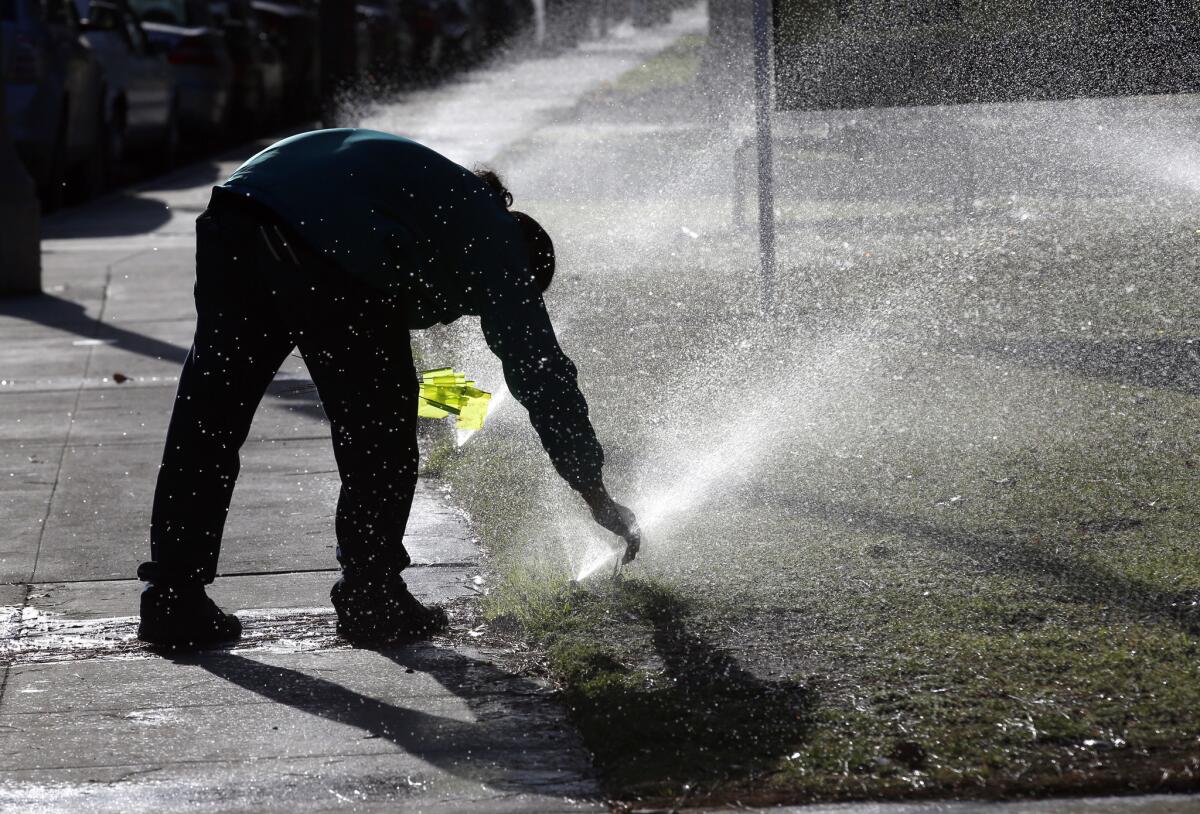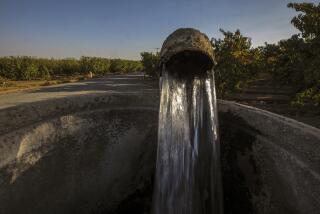Drought update: Dry wells, debate over water cutbacks

Gov. Jerry Brown proposed more than $2 billion in drought funding under a revised budget plan.
- Share via
With Californians increasing efforts to deal with the drought, lawmakers got an update Tuesday on exactly how bad things are and heard little to cheer them.
Among other areas of concern, about 1,900 wells have gone dry, Mark Cowin, director of the California Department of Water Resources, told a Senate joint oversight hearing on the drought.
Preliminary data from this spring show that over the course of the last year, the levels of more than 40% of measured wells have declined more than 2 feet, Cowin said.
“This drought is going to change California,” Cowin said.
State Sen. Fran Pavley (D-Agoura Hills), chairwoman of the Senate Natural Resources and Water Committee, wondered whether counties should “be pushing a pause button on drilling deeper and deeper wells.”
Several senators examined the hot-button question of which water uses should be forced to cut back the most.
State Sen. Hannah-Beth Jackson (D-Santa Barbara) asked regulators whether it was true that some senior water-rights holders with plentiful supplies were taking advantage of the crisis by selling their surplus water for exorbitant prices.
“There’s a concern that not everyone is doing their share,” Jackson said. “I’m trying to find out if that’s an accurate perception.”
Jim Nielsen (R-Gerber) called the characterization of agriculture as selfish “callous and uninformed.”
State water officials also defended agriculture. Felicia Marcus, the State Water Resources Control Board chairwoman, said lawmakers should consider urban and agricultural water supplies as two separate systems.
California’s system of water rights is harsh and “all or nothing,” she said.
“If folks have a right to water they also have a right to sell that water,” Marcus said. “At present, we don’t have a price-control mechanism.”
“Rural communities have borne the brunt of this” drought, she added.
“Asking people to take shorter showers … is very different than fallowing fields and [putting] thousands of people out of work.”
Last month, Gov. Jerry Brown ordered a mandatory statewide 25% cut in urban water usage. Critics said the plan went too easy on agriculture, which accounts for roughly 75% of Californians’ overall water use.
After hearing from state water officials, legislators listened to a panel of experts offer recommendations on how to battle the drought.
Suggestions included the creation of a “drought recovery and preparedness fund,” and the need for better data and recordkeeping on water lost to pipe leaks and water transfers.
“The one tragedy of this drought would be to come out of it without fundamental policy reform,” said Lester Snow, a former state water director who heads the nonprofit California Water Foundation. “California is the center of the information technology world, and yet we still have paper files. That has to be fixed.”
Twitter: @ByMattStevens
More to Read
Sign up for Essential California
The most important California stories and recommendations in your inbox every morning.
You may occasionally receive promotional content from the Los Angeles Times.














